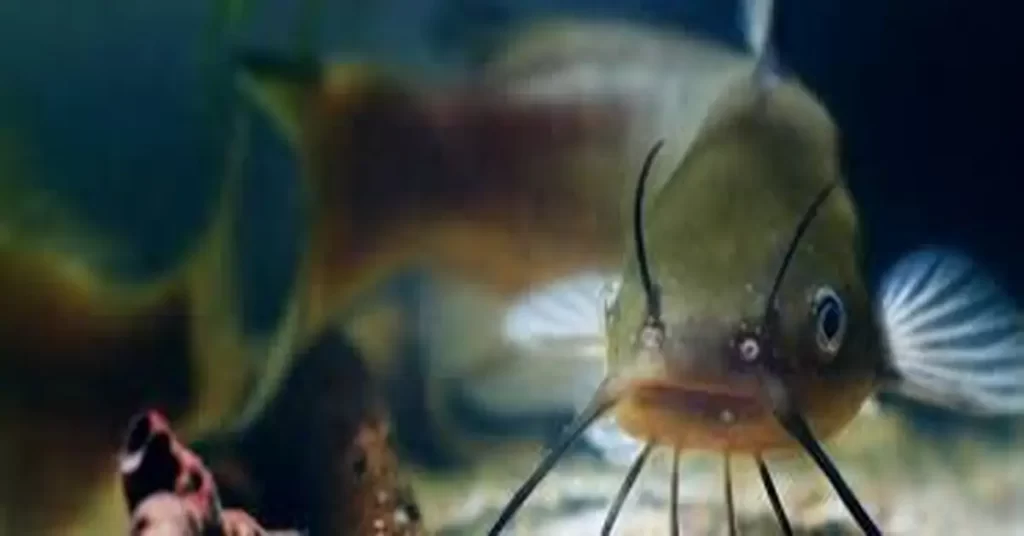
Introduction to: How do Catfish Sleep?
Catfish, with their sleek bodies and distinctive whisker-like barbels, are fascinating creatures that inhabit freshwater environments around the world. While these aquatic wonders are known for their unique appearance and diverse species, one aspect of their lives that often goes unnoticed is their sleeping habits. Have you ever wondered how catfish sleep? Join us on a journey to unravel the mysteries of catfish slumber and gain insights into the intriguing world of these underwater sleepers.
Understanding the Anatomy of Catfish
Before delving into the specifics of catfish sleep, let’s take a moment to explore the anatomy of these remarkable creatures. Catfish belong to the order Siluriformes and can be found in a variety of freshwater habitats, from rivers and lakes to ponds and swamps. Their bodies are well-adapted to their aquatic environments, featuring smooth, scaleless skin and a unique set of sensory organs.
One of the most distinguishing features of catfish is their barbels, which resemble whiskers and serve as highly sensitive touch organs. These barbels help catfish navigate their surroundings, locate food, and even communicate with other members of their species. Understanding the anatomy of catfish is crucial to appreciating how they sleep and interact with their environment.
Sleeping Patterns of Catfish
Contrary to popular belief, catfish do experience periods of rest, which can be considered a form of sleep. However, the way catfish sleep differs from the sleep patterns observed in mammals and birds. Catfish are known for being crepuscular or nocturnal, meaning they are most active during dawn and dusk or throughout the night. This behavior is closely linked to their hunting and feeding habits, as many catfish species prefer to stalk their prey in low light conditions.
During their periods of rest, catfish exhibit a behavior known as “lying on the bottom.” This involves the catfish settling down on the substrate of their aquatic environment, often hiding among rocks, vegetation, or other structures. The choice of resting spots may vary depending on the species, habitat, and individual preferences.
Respiration and Metabolic Activity
As obligate water dwellers, catfish possess a unique respiratory system that plays a crucial role in their sleeping patterns. Unlike mammals, which breathe air using lungs, catfish rely on gills to extract oxygen from the water. During periods of rest, catfish may reduce their metabolic activity and slow down their respiration rate.
Some species of catfish are even capable of a fascinating adaptation called “aerial respiration.” This allows them to extract oxygen directly from the air, enabling them to survive in oxygen-deprived environments. This adaptation becomes particularly relevant when considering how catfish manage their respiration during sleep, as it adds an extra layer of complexity to their already intriguing behavior.
The Role of Environmental Factors
Various environmental factors influence how catfish sleep and where they choose to rest. Water temperature, for instance, plays a significant role in the metabolic rate of catfish. As cold-blooded animals, catfish are highly sensitive to changes in temperature, and their metabolic activity tends to slow down in cooler conditions. This may affect their choice of resting spots and the duration of their sleep.
Additionally, water quality, availability of hiding places, and the presence of potential predators can also impact catfish sleep patterns. These factors contribute to the adaptability of catfish in different aquatic environments, as they adjust their sleeping behavior based on the specific conditions of their habitats.
The Catfish Sleep Cycle

While catfish do not experience sleep in the same way mammals do, they do exhibit a sleep-like cycle that involves periods of reduced activity. The catfish sleep cycle is closely tied to their feeding habits, with periods of rest interspersed between active hunting and foraging phases.
Observing catfish in an aquarium setting provides valuable insights into their sleep cycle. It is not uncommon to see catfish lying motionless on the substrate during the day, especially if the aquarium is dimly lit or shaded. This behavior is a manifestation of their crepuscular or nocturnal nature, as they conserve energy during daylight hours in preparation for increased activity during the evening.
Creating an Ideal Sleep Environment for Captive Catfish
For aquarium enthusiasts who keep catfish as pets, providing an environment that mimics their natural habitat is essential for promoting healthy sleep patterns. Consider the following factors when creating an ideal sleep environment for captive catfish:
- Substrate: Catfish prefer substrates with a natural feel, such as sand or fine gravel. These materials mimic the riverbeds and lake bottoms where catfish typically rest.
- Hiding Places: Providing ample hiding spots, such as caves, rocks, and vegetation, allows catfish to feel secure and reduces stress. Catfish may choose these hiding places for rest and protection during their sleep cycles.
- Aquarium Lighting: Mimic the natural light conditions of a catfish’s habitat by using dim lighting during the day and slightly increasing the intensity in the evening. Avoid sudden changes in lighting, as this can startle catfish and disrupt their sleep patterns.
- Water Quality: Maintain optimal water parameters, including temperature, pH, and oxygen levels, to ensure the well-being of catfish. Consistent water quality contributes to a stress-free environment, promoting healthy sleep cycles.
- Compatible Tankmates: Consider the compatibility of tankmates when selecting companions for catfish. Aggressive or overly active species may disrupt the sleep of catfish, leading to stress and potential health issues.
Conclusion to: How do Catfish Sleep?
In conclusion, the sleeping habits of catfish are a fascinating aspect of their biology that adds to the allure of these aquatic creatures. While catfish do not experience sleep in the same way mammals do, their periods of reduced activity and resting behavior provide valuable insights into their adaptation to aquatic environments.
Understanding the anatomy of catfish, their respiratory systems, and the influence of environmental factors allows aquarium enthusiasts and researchers alike to create optimal conditions for catfish well-being. By replicating natural habitats and providing suitable hiding places, aquarists can encourage healthy sleep cycles in captive catfish.
As we continue to explore and appreciate the diverse wonders of the underwater world, the study of catfish sleep serves as a reminder of the intricate relationships between animals and their environments. So, the next time you observe your catfish gracefully gliding through the water or resting on the substrate, take a moment to appreciate the beauty and complexity of their sleep-filled world beneath the surface. Catfishingusa.com Blog

